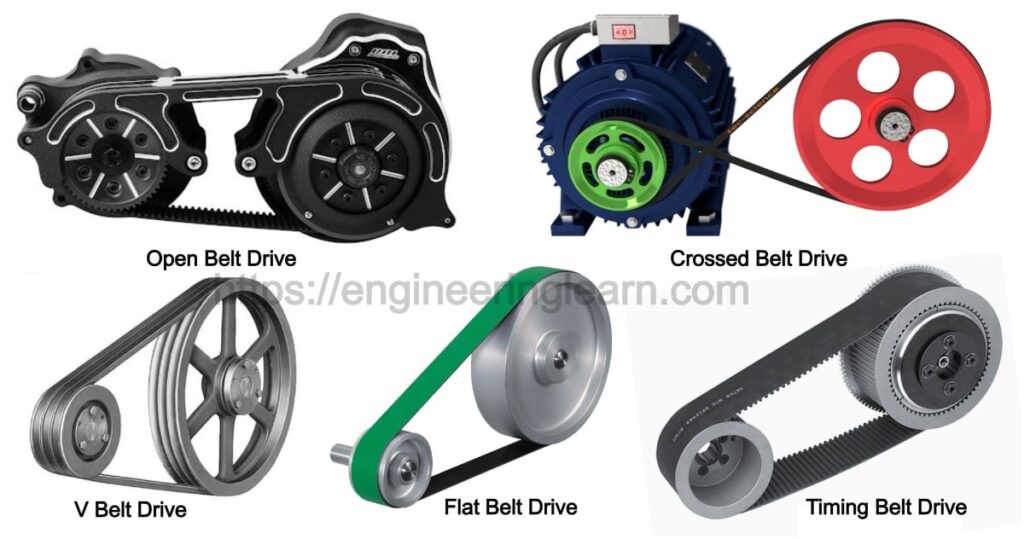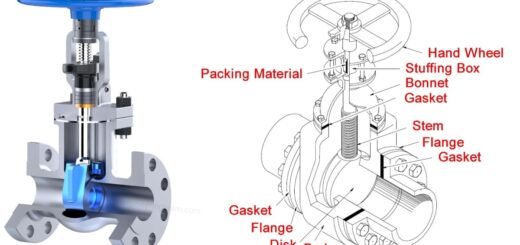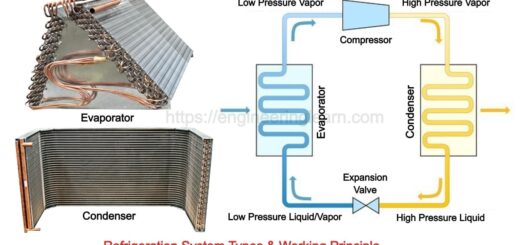Types of Belt Drive: Material, Applications, Advantages & Disadvantages

What is Belt Drives?
Types of Belt Drive: Material, Applications, Advantages & Disadvantages :- A belt drive is referred to as that mechanism wherein the power gets transmitted by the movement of a continuous flexible belt. This is used in order to transmit the rotational motion from one mechanical element to another. A belt is referred to as a looped strip of flexible material which is used to mechanically link either two or more rotating shafts. A belt drive is found in almost every possible modern engine available in the market.
Types of Belt Drives
There are five different types of belt drive which are commonly known to mankind which are mentioned below:
- Open belt drive
- Closed or crossed belt drive
- Fast and loose cone pulley
- Stepped cone pulley
- Jockey pulley drive
1. Open Belt Drive: ( Types of Belt Drive )
Open belt drive is referred to as that drive which comprises of the shafts rotation in the similar direction which means that the direction of rotation is found to be same as the driving and the driven pulley.
The shafts seem to be arranged in the parallel directions. In case the shafts are found having more distance within the driver and the driving pulley then there must be the upper side, which can be the slack side and the below side, the tight side.
2. Crossed Belt Drive: ( Types of Belt Drive )
Crossed belt drive also known to be closed belt drive and is referred to as that drive which has transmitted more power but there is a problem that it cannot run that faster. This is the reason which creates rubbing between belts and leads to wear and tear.
In this type of belt drive, the shafts are found to rotate in the opposite direction. At the junction side, it is found to rub and therefore it wears and tears off. If you wish to keep your belt away from wear and tear then you must place more distance within the pulley and also run it at lower speed.
3. Fast and Loose Cone Pulley: ( Types of Belt Drive )
As the name indicates that fast and loose pulley means that there are two pulleys inside it. But it needs to be understood how these two pulleys are placed inside each other.
The fast pulley is found to be mounted on a shaft accompanied with a key joint and the loose pulley is found to run freely on the shaft due to which it is incapable of transmitting any power. Another term in that is when the multiple machines are found working from a single power source then in this type of condition, each machine has provided with this fast and loose cone pulley.
4. Stepped Cone Pulley Drive: ( Types of Belt Drive )
Stepped cone pulley is also referred to as speed cone. There are more pulleys which are attached to the different diameter wherein one is attached adjacent to another.
Stepped cone pulleys are used where there is a need to change gear or speed of driven shaft, or change frequently like in the case of a machine lathe, milling etc.
The diameter of the driving and driven pulley is such that whenever one wishes to shift to another pulley the same belt can operate.
5. Jockey Pulley Drive: ( Types of Belt Drive )
Jockey pulleys are referred to as those pulleys which are used in the steering section of any system. Jockey pulley is termed to be an idle pulley which is found to be used in increasing the angle of contact in an open belt drive. By increasing the angle of the contact steer, the power of the transmission capacity of the drive gets increased.
This one pulley is found to be mounted nearer to the smaller pulley wherein we can say that this is placed on the slack side of the belt. It is found to help in increasing the angle of contact of the belt, so that the belt tension can be increased and also the drive is found providing a high-velocity ratio.









